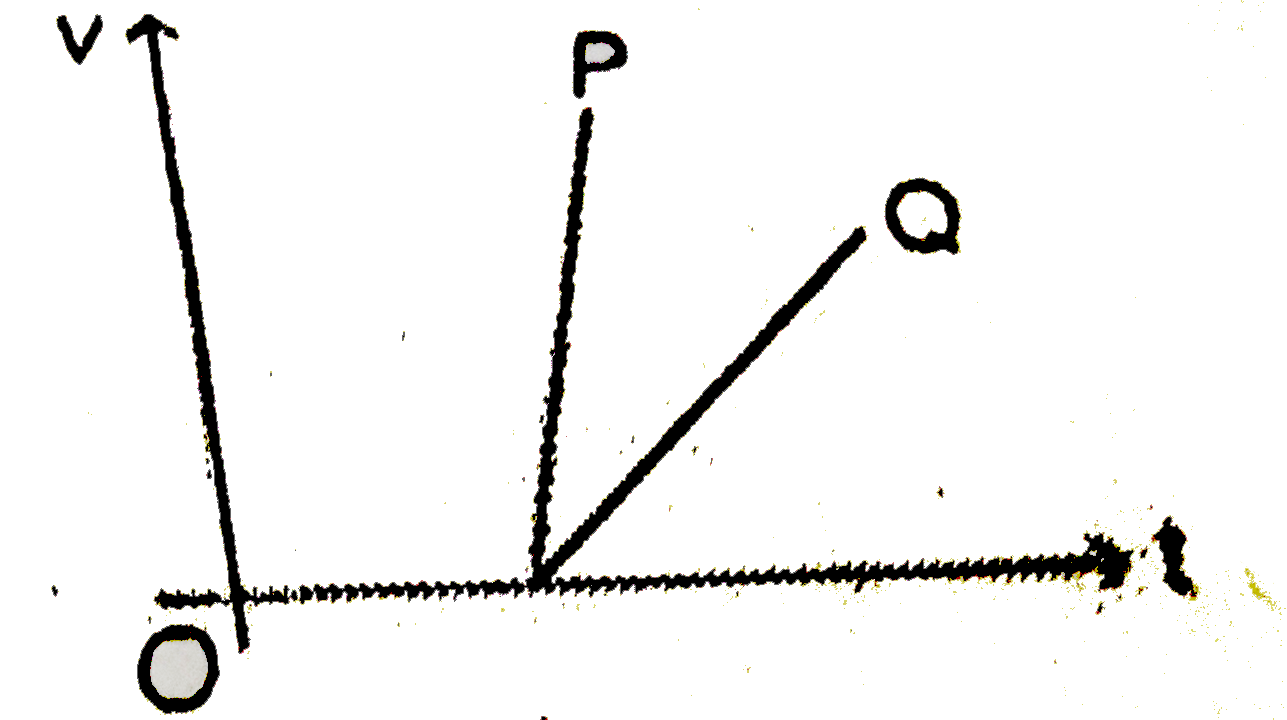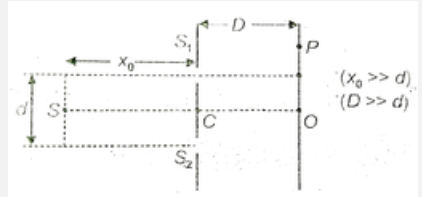Two source S1 and S2 of intensity I1 and I2 are placed in front of a screen [Figure a]. The pattern of intensity distribution see in the central portion is given by Figure b. In this case which of the following statement are true.
![Two source S(1) and S(2) of intensity I(1) and I(2) are placed in front of a screen [Figure a]. The pattern of intensity distribution see in the central portion is given by Figure b. In this case which of the following statement are true.](https://d10lpgp6xz60nq.cloudfront.net/physics_images/NAR_PHY_V02_XII_C01_E01_237_Q01.png)

S1 and S2 have the same intensities.
S1 and S2 have a constant phase difference
S1 and S2 have the same phase
S1 and S2 have the same wavelength
The correct Answer is:A, B, D
(a,b,d) Consider the pattern of the intensity shown in the figure.
(i) As intensities of all successive minima is zero, hence we can say that two sources S1 and S2 are having same intensitiess.
(ii) As width of the seccessive maxima ( pulses) increase in continuous manner, we can say that the path difference (x) or phase difference varies in continuous manner.
(iii) We are using monochromatic light in YDSE to avoid overlapping and to have very clear pattern on the screen.
Topper's Solved these Questions
- WAVE OPTICSBOOK - NCERT EXEMPLAR ENGLISHCHAPTER - WAVE OPTICSEXERCISE - Very short Answer Type Questions.
6 Videos
- WAVE OPTICSBOOK - NCERT EXEMPLAR ENGLISHCHAPTER - WAVE OPTICSEXERCISE - Short answer type Questions
3 Videos
- SEMICONDUCTOR ELECTRONICS: MATERIAL,DEVICES AND SIMPLE CIRCUITBOOK - NCERT EXEMPLAR ENGLISHCHAPTER - SEMICONDUCTOR ELECTRONICS: MATERIAL,DEVICES AND SIMPLE CIRCUITEXERCISE - Multiplel choice questions
26 Videos
Similar Questions
Unpolarized light of intensity I0 is incident on surface of a block of glass at brewster's angle. In that case, which one of the following statements is true-
View SolutionThe v−t graph for two particles P and Q are given in the figure. Consider the following statements(s). Then, which of the following statement(s) is/are True:

View SolutionTwo coherent sources of intensities I1 and I2 produce an interference pattern. The maximum intensity in the interference pattern will be
View SolutionWhen two progressive waves of intensity I1 and I2 but slightly different frequencies superpose, the resultant intensity flutuates between :-
View SolutionTwo identical sources of sound S1andS2 produce intensity I0 at a point P equidistant from each source .
(i) Determine the intensity of each at the point P.
(ii) If the power of S1 is reduced to 64% and phase difference between the two sources is varied continuously , then determine the maximum and minimum intensities at the point P.
(iii) If the power of S1 is reduced by 64% , then determine the maximum and minimum intensities at the point P.
View SolutionIn a young's doule slits experiment, a monochromatic source of wavelength λ is used to illuminate the two slits

S1 and S2. The slitss S1 and S2 are identical and source S is placed symmetrically as shown. interference pattern is observed on a screen at a distance D from the centre of slit. The distance between the slits is d.
If the resultant intensity at P is same as that O, then the distance OP can not be
View SolutionThe maximum intensity of fringes in Young's experiment is I. If one of the slit is closed, then the intensity at that place becomes Io. Which of the following relation is true?
View SolutionThe maximum intensity of fringes in Young's experiment is I. If one of the slit is closed, then the intensity at that place becomes Io. Which of the following relation is true?
View SolutionTwo periodic waves of intensities I1 and I2 pass through a region at the same time in the same direction. The sum of the maximum and minimum intensities is:
View SolutionTwo periodic waves of intensities I1 and I2 pass through a region at the same time in the same direction. The sum of the maximum and minimum intensities is:
View Solution
